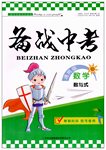题目内容
Scientists have not come close to understanding all the different kinds of life on the planet, but US researcher Craig Venter is already working on creating the first artificial life.
Venter and his researchers made a breakthrough this August. They successfully moved the DNA of one type of bacteria(细菌) to a yeast(酵母) cell, changed it, then put it into another bacterial cell.
“Bacteria have systems that protect them from foreign DNA,” Venter explained to the BBC. In the experiment, the team managed to block this system.
The experiment was performed on a simple type of bacteria called Mycoplasma mycoides. The team took the bacteria’s genes and put them into a yeast cell.
Putting the DNA in a yeast cell allowed the team to change the genes----in this case, taking out a gene that was not necessary for the bacteria to live.
They then put the gene into a host bacteria cell. The cell went on to divide normally, producing new healthy bacteria.
In January, the team created artificial genes of a new type of bacteria. Their next goal is to put the artificial DNA into a host cell to create a new species, according to a report in Science magazine.
“If we don’t make any errors, I think it should work and we should have the first artificial species by the end of the year,” Venter said in the report.
The first artificial life from is likely to be a simple man-made bacteria, to prove that the technology can work. But that form will be followed by more complex bacteria that turn coal into cleaner natural gas, or algae that can take in carbon dioxide and change it into fuel.
Many scientists think it’s good news to have this artificial life, but others are worried that the technology to create new organisms might end up in the wrong hands, with dangerous results.
【小题1】Craig Venter and his team are working to ______.
| A.create a new animal |
| B.clone a new species |
| C.produce the first artificial bacteria |
| D.develop a new system |
a. A gene was removed and put into a host bacteria cell.
b. The genes were put into a yeast cell.
c. The cell produced new healthy bacteria.
d. The genes were changed.
e. Some genes were taken out of Mycoplasma mycoides.
| A.d-e-a-c-b | B.e-b-d-a-c |
| C.a-d-e-c-b | D.b-e-d-c-a |
| A.cure deadly diseases |
| B.prepare the Earth for natural disasters |
| C.prove that the technology can work |
| D.improve the earth’s environment |
| A.Venter and his team are the only scientists trying to create artificial life |
| B.The experiment was based on research into different kinds of life on Earth |
| C.A new type of bacteria was created in January |
| D.All scientists are not in favor of the research |
【小题1】C
【小题2】B
【小题3】D
【小题4】D
解析试题分析:本文主要讲了美国的Craig Venter正在着手研究新的人造生命,有些科学家支持,有些科学家反对,甚至认为会造成很严重的后果。。
【小题1】根据but US researcher Craig Venter is already working on creating the first artificial life,故选C。
【小题2】根据这一段内容The experiment was performed on a simple type of bacteria called Mycoplasma mycoides. The team took the bacteria’s genes and put them into a yeast cell.Putting the DNA in a yeast cell allowed the team to change the genes----in this case, taking out a gene that was not necessary for the bacteria to live.They then put the gene into a host bacteria cell. The cell went on to divide normally, producing new healthy bacteria.故选B。
【小题3】根据But that form will be followed by more complex bacteria that turn coal into cleaner natural gas, or algae that can take in carbon dioxide and change it into fuel,故选D。
【小题4】根据Many scientists think it’s good news to have this artificial life, but others are worried that the technology to create new organisms might end up in the wrong hands, with dangerous results.故选D。
考点:报刊类文章阅读理解。
点评:做这类题要有理有据,以文中所给事实细节为依据,全面把握作者思路与文章脉络,对隐含的观点进行合理推测与判断,深入领会作者“言外之意”,切忌主观臆断,断章取义,曲解作者本意。

 备战中考寒假系列答案
备战中考寒假系列答案